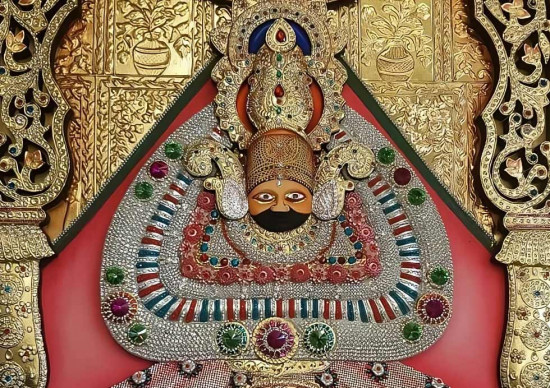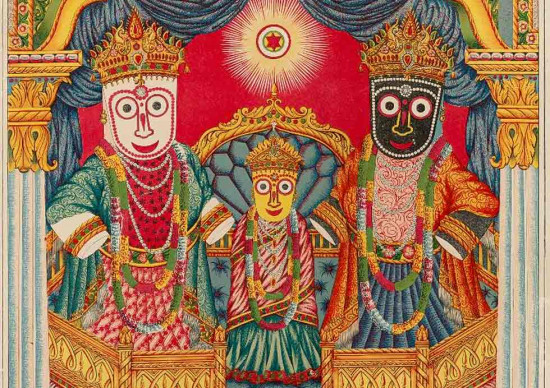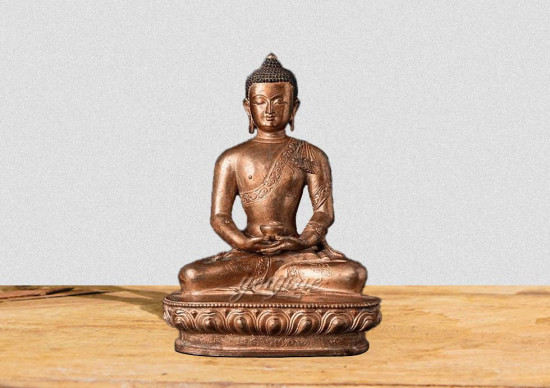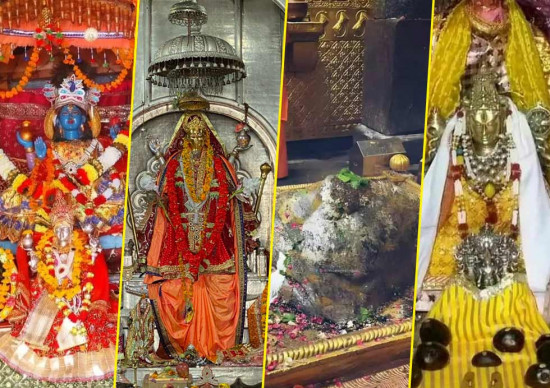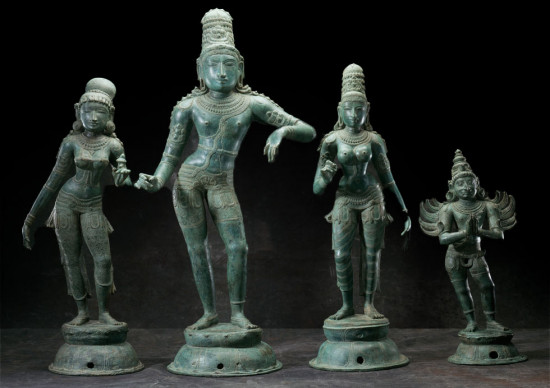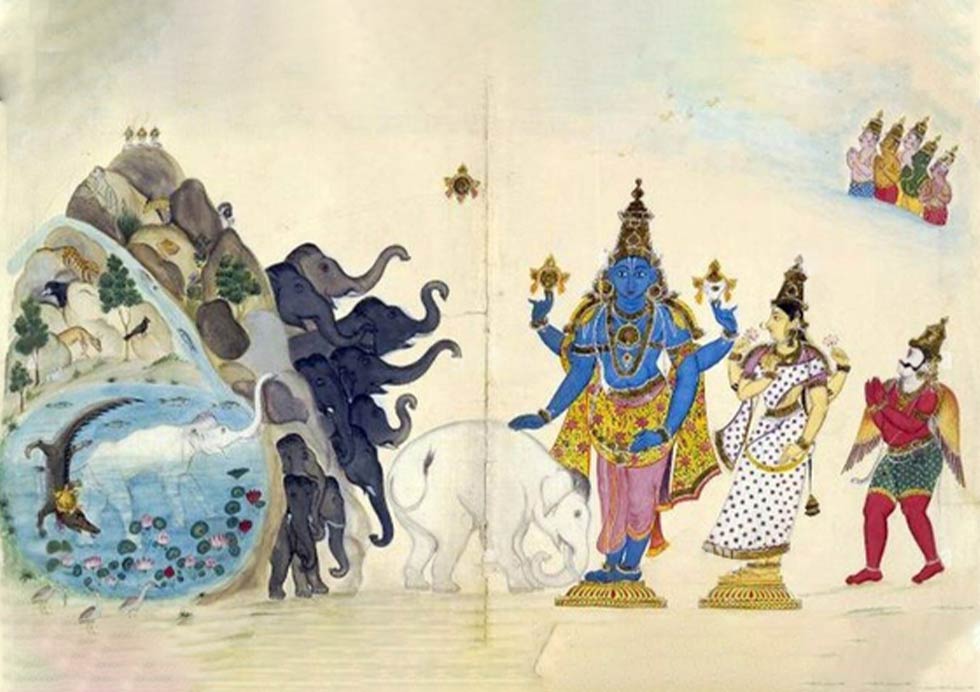
In the enchanting realm of Mount Trikuta, there lived a majestic elephant named Gajendra, the sovereign ruler of his elephantine kin. His verdant abode, Ritumat, was a haven of beauty and serenity. One fateful day, Gajendra ventured to a nearby lake, intending to pluck lotus flowers for a prayer dedicated to the revered deity Vishnu.
Unexpectedly, a lurking crocodile emerged from the lake, seizing Gajendra’s leg in a vice-like grip. Despite valiant efforts to break free and the desperate pleas of his elephant companions, Gajendra found himself ensnared in the relentless clutches of the crocodile. Abandoned by his herd in the face of impending doom, Gajendra, depleted of strength, called out to Vishnu, holding a lotus aloft as a humble offering.
Responding swiftly to Gajendra’s fervent plea, Lord Vishnu, mounted atop his Vahana Garuda, hastened to the scene. Witnessing the divine approach, Gajendra, in an act of profound devotion, raised a lotus with his trunk. Pleased by this heartfelt gesture, Lord Vishnu wielded his Sudarshana Chakra, severing the crocodile’s head and liberating Gajendra from mortal peril.
Expressing profound gratitude, Gajendra humbly prostrated before Lord Vishnu, who revealed the karmic tale of Gajendra’s past life as King Indradyumna and the divine purpose behind his rebirth as an elephant. Vishnu imparted the wisdom of Kaivalya, transcending mortal realms, and assured Gajendra of attaining moksha through surrender.
Unexpectedly, a lurking crocodile emerged from the lake, seizing Gajendra’s leg in a vice-like grip. Despite valiant efforts to break free and the desperate pleas of his elephant companions, Gajendra found himself ensnared in the relentless clutches of the crocodile. Abandoned by his herd in the face of impending doom, Gajendra, depleted of strength, called out to Vishnu, holding a lotus aloft as a humble offering.
Responding swiftly to Gajendra’s fervent plea, Lord Vishnu, mounted atop his Vahana Garuda, hastened to the scene. Witnessing the divine approach, Gajendra, in an act of profound devotion, raised a lotus with his trunk. Pleased by this heartfelt gesture, Lord Vishnu wielded his Sudarshana Chakra, severing the crocodile’s head and liberating Gajendra from mortal peril.
Expressing profound gratitude, Gajendra humbly prostrated before Lord Vishnu, who revealed the karmic tale of Gajendra’s past life as King Indradyumna and the divine purpose behind his rebirth as an elephant. Vishnu imparted the wisdom of Kaivalya, transcending mortal realms, and assured Gajendra of attaining moksha through surrender.

The Birth of Gajendra Moksha Stotra:
Gajendra’s prayer, uttered in the direst moments of his struggle, crystallized into the Gajendra Moksha Stotra. This sacred hymn, later integrated into the Vishnu Sahasranama, reverberates with the essence of liberation. It captures the dialogue between the devoted soul and the divine, expressing the fervent plea for release from the clutches of life’s challenges.
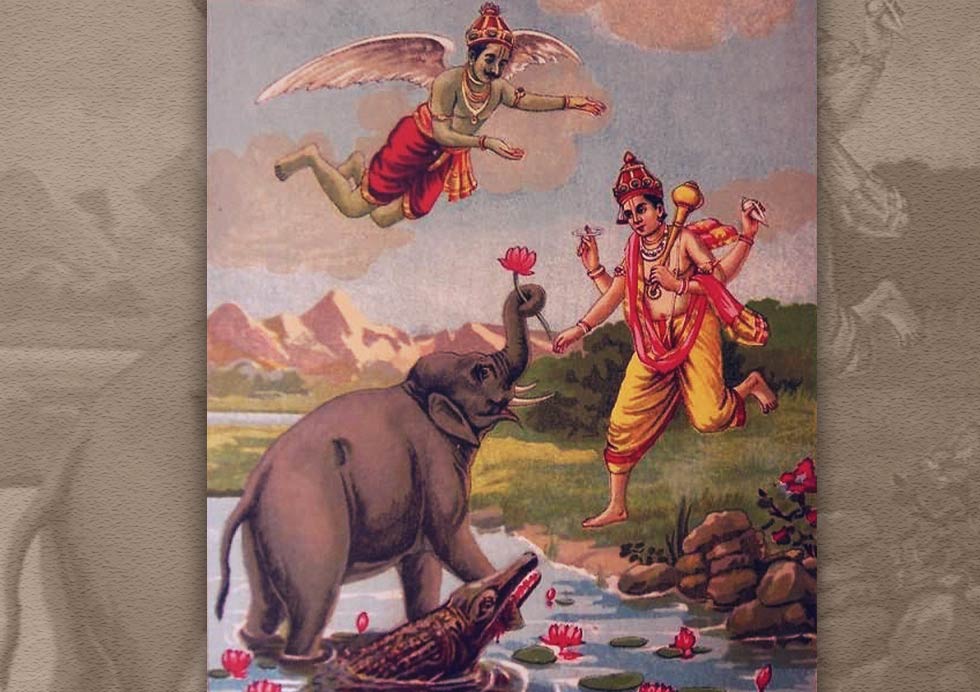
The Power of Devotion in Gajendra Moksha Stotra:
The Gajendra Moksha Stotra consists of 34 verses. Each verse is a part of the larger hymn, expressing Gajendra’s prayer and devotion to Lord Vishnu during the moment of crisis. These verses are deeply ingrained in the Vishnu Sahasranama, forming a significant part of the sacred text. The hymn narrates the story of Gajendra’s struggle, his plea for help, and the divine intervention that leads to his liberation.
Gajendra Moksha Stotra stands as a testament to the transformative power of devotion. Through its rhythmic verses, it encapsulates the heartbeat of a soul reaching out to cosmic forces, seeking deliverance, and finding refuge in the compassionate embrace of Lord Vishnu.
In the intricate tapestry of Hindu texts, the curses inflicted by sages are often intertwined with the principles of dharma (righteousness) and cosmic balance. The sages, revered for their wisdom and spiritual prowess, play a crucial role in maintaining order in the universe. In the case of Gajendra and the crocodile, their curses can be traced back to specific incidents in their past lives.
Gajendra Moksha Stotra stands as a testament to the transformative power of devotion. Through its rhythmic verses, it encapsulates the heartbeat of a soul reaching out to cosmic forces, seeking deliverance, and finding refuge in the compassionate embrace of Lord Vishnu.
In the intricate tapestry of Hindu texts, the curses inflicted by sages are often intertwined with the principles of dharma (righteousness) and cosmic balance. The sages, revered for their wisdom and spiritual prowess, play a crucial role in maintaining order in the universe. In the case of Gajendra and the crocodile, their curses can be traced back to specific incidents in their past lives.
Gajendra's Curse:
Gajendra, in his previous life as King Indradyumna, committed an act of disrespect towards the revered sage Agastya. The king, immersed in his regal pride, neglected to accord the sage the due reverence and honor. This transgression against a sage, who embodies wisdom and divine knowledge, invoked the ire of Agastya. As a result, Agastya cursed King Indradyumna to be reborn as an elephant, leading to Gajendra’s eventual plight.
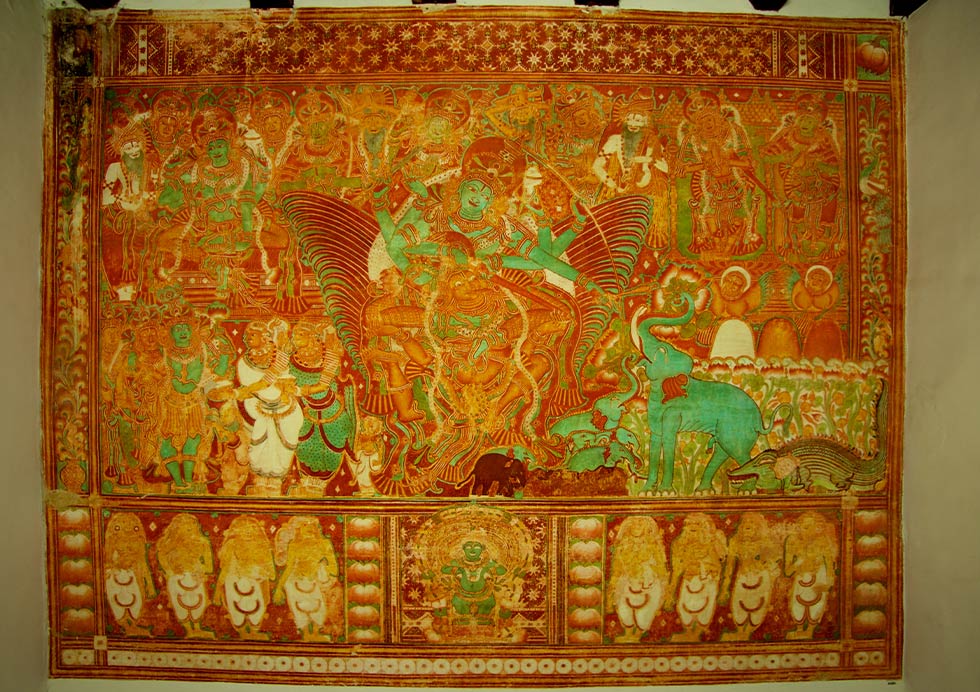
Crocodile's Curse (Huhu's Curse):
The crocodile, known as Huhu in its past life, was once a Gandharva king. During a sacred ritual conducted by the sage Devala, Huhu, in a moment of jest, playfully pulled the sage’s leg. This irreverent act during a solemn occasion angered the sage, prompting him to curse Huhu. The curse foretold that Huhu would be reborn as a crocodile but also conveyed the assurance of liberation through Lord Vishnu’s intervention.
These curses, while seemingly punitive, are rooted in the cosmic principles of cause and effect. The sages, as custodians of cosmic order, respond to actions that disrupt the harmony of the universe. The curses, though carrying an element of retribution, also serve as catalysts for spiritual growth and redemption. In the grand narrative of Hindu mythology, curses often become pivotal elements in the characters’ journeys toward self-realization and eventual liberation.
These curses, while seemingly punitive, are rooted in the cosmic principles of cause and effect. The sages, as custodians of cosmic order, respond to actions that disrupt the harmony of the universe. The curses, though carrying an element of retribution, also serve as catalysts for spiritual growth and redemption. In the grand narrative of Hindu mythology, curses often become pivotal elements in the characters’ journeys toward self-realization and eventual liberation.

